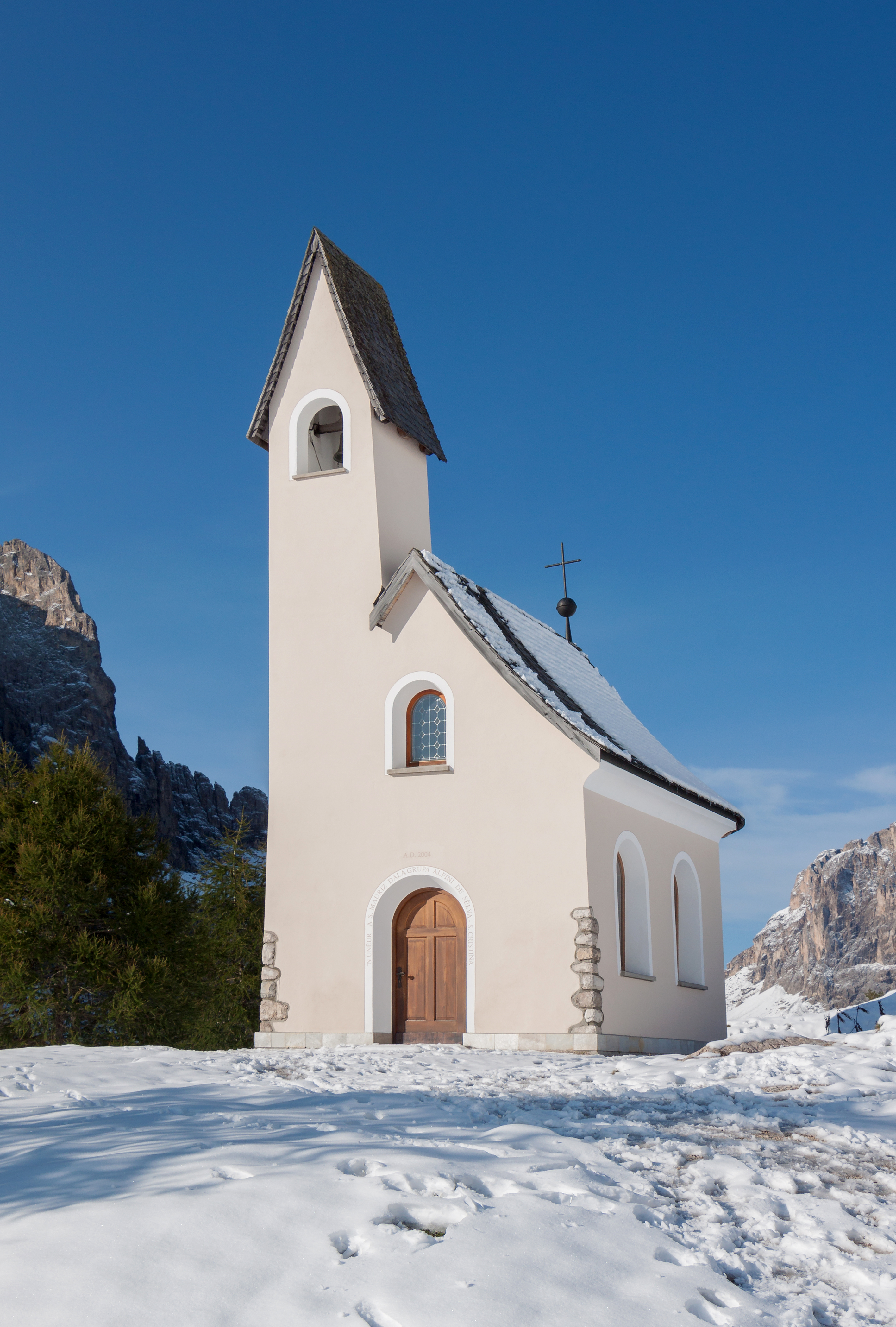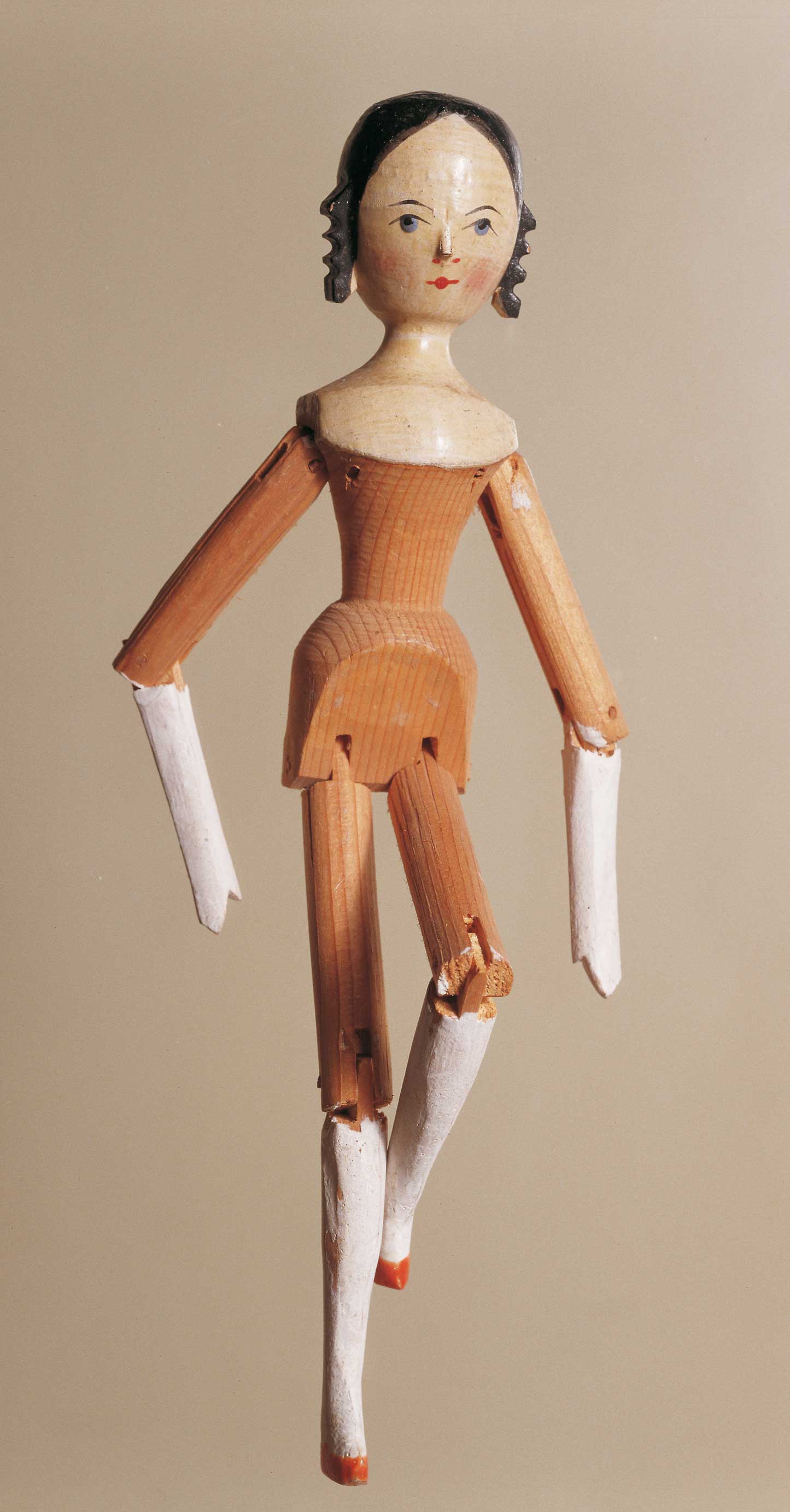|
Museum Gherdëina
The Gherdëina Local Heritage Museum was opened in the ''Cësa di Ladins'' in Urtijëi, in northernmost Italy, in 1960. The building is the seat of the Union di Ladins de Gherdëina a cultural organisation for the keeping of the Ladin language and heritage in Val Gherdëina. In addition to the museum, the building hosts a library specialized in Ladin language and culture. The collections of the Gherdëina Museum enable the visitor to gain an informative insight into the cultural and natural world of Val Gherdëina. The collections are distributed over two floors and cover the following themes: wood carving art of the last three centuries, old locally produced wooden toys, a collection of paintings by local artists, the local archaeology, the region's fossils, minerals and the local flora and fauna. Sections Entrance At the entrance, the exhibition starts with several art objects like the Crucifix of Sëurasass (1932) by Baptist Walpoth and Vinzenz Peristi, as well as ... [...More Info...] [...Related Items...] OR: [Wikipedia] [Google] [Baidu] |
Urtijëi
Urtijëi (; german: St. Ulrich in Gröden ; it, Ortisei ) is a town of 4,637 inhabitants in South Tyrol in northern Italy. It occupies the Val Gardena within the Dolomites, a mountain chain that is part of the Alps. Geography Urtijëi borders the following municipalities: Kastelruth, Villnöß, Lajen and Santa Cristina Gherdëina. History The Ladin-language name Urtijëi derives from the Latin word and the suffix '','' with the meaning "place of nettles". From 1860 to 1914 Urtijëi experienced a relevant economic growth due to the opening of a major road connecting Val Gardena to the main railroad; as a result the local woodcarving industry flourished. International tourism developed through the discovery of the Dolomites first by English tourists, and subsequently visitors from other parts of Austria-Hungary as well as the German Empire. Currently, the town's economy is mostly based on winter skiing tourism, summer hiking tourism, and woodcarving. Coat of arms The emblem ... [...More Info...] [...Related Items...] OR: [Wikipedia] [Google] [Baidu] |
Ahrntal
Ahrntal (; it, Valle Aurina ) is a ''comune'' (municipality) in South Tyrol in northern Italy, located about northeast of the city of Bolzano (''Bozen''), on the border with Austria. Geography Ahrntal borders the following municipalities: Mühlwald, Prettau, Sand in Taufers, Brandberg (Austria), Finkenberg (Austria), and Mayrhofen (Austria). Frazioni The municipality of Ahrntal contains the ''frazioni'' (subdivisions, mainly villages and hamlets) Luttach (Lutago), Steinhaus (Cadipietra), St. Jakob (San Giacomo), St. Johann (San Giovanni), St. Peter (San Pietro) and Weißenbach (Riobianco). Weißenbach is composed of picturesque alpine farmhouses, grouped around the foaming white glacial stream from which its name is derived. With a population of around 550, it sits at an elevation of above sea level. Topography To the north, west and southwest the municipality is surrounded by the Zillertal Alps. The main chain of these Alps at the head of the valley also forms the border ... [...More Info...] [...Related Items...] OR: [Wikipedia] [Google] [Baidu] |
Toy Museums
A toy museum is a museum for toys. They typically showcase toys from a particular culture or period with their history. These are distinct from children's museums, which are museums for children, and are often interactive – toy museums may be aimed at children or adults, and may have interactive exhibits or be exclusively for display. Notable toy museums The following lists only museums specializing in toys, whose collections are open for public viewing. Some museums such as the American Museum of Natural History have toys on display in their permanent collection, but are not full-fledged toy museums and as such are not listed here. Also, organizations. such as The Doll and Toy "Museum" of New York City that hold toy collections but are not open for public viewing are not listed here. Africa *Toy and Miniature Museum, Stellenbosch, Western Cape, South Africa Americas ;North Canada *National Toy Museum of Canada, Victoria, British Columbia USA *The National Farm Toy Mu ... [...More Info...] [...Related Items...] OR: [Wikipedia] [Google] [Baidu] |
Natural History Museums In Italy
Nature, in the broadest sense, is the physical world or universe. "Nature" can refer to the phenomena of the physical world, and also to life in general. The study of nature is a large, if not the only, part of science. Although humans are part of nature, human activity is often understood as a separate category from other natural phenomena. The word ''nature'' is borrowed from the Old French ''nature'' and is derived from the Latin word ''natura'', or "essential qualities, innate disposition", and in ancient times, literally meant "birth". In ancient philosophy, ''natura'' is mostly used as the Latin translation of the Greek word '' physis'' (φύσις), which originally related to the intrinsic characteristics of plants, animals, and other features of the world to develop of their own accord. The concept of nature as a whole, the physical universe, is one of several expansions of the original notion; it began with certain core applications of the word φύσις by pre-So ... [...More Info...] [...Related Items...] OR: [Wikipedia] [Google] [Baidu] |
Museums In South Tyrol
A museum ( ; plural museums or, rarely, musea) is a building or institution that cares for and displays a collection of artifacts and other objects of artistic, cultural, historical, or scientific importance. Many public museums make these items available for public viewing through exhibits that may be permanent or temporary. The largest museums are located in major cities throughout the world, while thousands of local museums exist in smaller cities, towns, and rural areas. Museums have varying aims, ranging from the conservation and documentation of their collection, serving researchers and specialists, to catering to the general public. The goal of serving researchers is not only scientific, but intended to serve the general public. There are many types of museums, including art museums, natural history museums, science museums, war museums, and children's museums. According to the International Council of Museums (ICOM), there are more than 55,000 museums in 202 countries ... [...More Info...] [...Related Items...] OR: [Wikipedia] [Google] [Baidu] |
Ludwig Moroder
Ludwig Moroder "Lenert" ( Ortisei, 7 November 1879 – Ortisei, 10 August 1953) was an Italian sculptor and teacher. He was also known as:''Ludwig Moroder dl Meune'' or ''Lodovico Moroder''. Biography He was born in Ortisei, which at the time was a famous tourist destination in Val Gardena, his family was renowned in the small town as its members were appointed to be lifelong sacristans in the local church. His father used to carve wooden Crosses but he passed before he could pass the skill onto his son. Ludwig learnt to carve wood from Professor Franz Haider, Josef Moroder-Lusenberg and Franz Tavella. He worked in the Moroder family workshop as well in Lenert's house in Ortisei, he was also promoted to the role of technical director in the atelier of the Moroder brothers in Offenburg in Baden-Württemberg Germany. Between 1900 and 1914 he sculpted several altars requested by churches for the Moroder Brothers workshop, these altars were characterised by Neo-Gothic styled statue ... [...More Info...] [...Related Items...] OR: [Wikipedia] [Google] [Baidu] |
Luis Piazza
Luis is a given name. It is the Spanish form of the originally Germanic name or . Other Iberian Romance languages have comparable forms: (with an accent mark on the i) in Portuguese and Galician, in Aragonese and Catalan, while is archaic in Portugal, but common in Brazil. Origins The Germanic name (and its variants) is usually said to be composed of the words for "fame" () and "warrior" () and hence may be translated to ''famous warrior'' or "famous in battle". According to Dutch onomatologists however, it is more likely that the first stem was , meaning fame, which would give the meaning 'warrior for the gods' (or: 'warrior who captured stability') for the full name.J. van der Schaar, ''Woordenboek van voornamen'' (Prisma Voornamenboek), 4e druk 1990; see also thLodewijs in the Dutch given names database Modern forms of the name are the German name Ludwig and the Dutch form Lodewijk. and the other Iberian forms more closely resemble the French name Louis, a derivati ... [...More Info...] [...Related Items...] OR: [Wikipedia] [Google] [Baidu] |
Luis Trenker
Luis Trenker (born Alois Franz Trenker, 4 October 1892 – 13 April 1990) was a South Tyrolean film producer, director, writer, actor, architect, Mountaineering, alpinist, and Bobsleigh, bobsledder. Biography Early life Alois Franz Trenker was born on 4 October 1892 in Urtijëi, County of Tyrol, Tyrol (german: link=no, St. Ulrich in Gröden, it, Ortisei) in the Austria-Hungary, Austro-Hungarian Empire (in present-day northern Italy). His father Jacob Trenker was a painter from North Tyrol, and his mother Karolina (''née'' Demetz) was from Urtijëi in Val Gardena. He grew up speaking two languages: German, the language of his father, and Ladin language, Ladin, the language of his mother. He attended the local primary school from 1898 to 1901, and then attended the Josefinum in Bolzano in 1902 and 1903. From 1903 to 1905, he attended the arts and crafts school in Bolzano, where he developed his skills as a woodcarver. In 1912, he entered the Realschule in Innsbruck, where he stud ... [...More Info...] [...Related Items...] OR: [Wikipedia] [Google] [Baidu] |
Gardena Pass
Gardena Pass ( it, Passo Gardena; german: Grödnerjoch; lld, Ju de Frara or ''Jëuf de Frea'') is a high mountain pass in the Dolomites of the South Tyrol in northeast Italy. At an elevation of above sea level, the pass connects Sëlva in the Val Gardena on the west side with Corvara in the Val Badia. The road over it comprises part of the famous Sella Ring, in which four linked passes (Gardena, Sella, Pordoi, and Campolongo) encircle the spectacular Sella group. The route becomes busy with tourists, motorcyclists, and cyclists during the summer. There are tourist accommodations on the pass itself, and hikers visit the pass to access the dramatic Dolomite mountains. Pizes de Cir North of the pass in the direct vicinity, the mountain range Pizes de Cir with 2592 meter high peak the Gran Cir can be seen. Maratona dles Dolomites The Gardena Pass is the fourth of seven Dolomite mountain passes which riders cross in the annual Maratona dles Dolomites single-day bicycle race. ... [...More Info...] [...Related Items...] OR: [Wikipedia] [Google] [Baidu] |
Dutch Doll
Peg wooden dolls, also known as Dutch dolls (), are a type of wooden doll from Germany. They originated as simple lathe-turned dolls from the Val Gardena in the Alps. The name Pennywoods is also used for dolls of this type, in particular those made in the United States. These dolls were sold undressed. Children would then make their clothing from scraps of fabric. Other similarly-constructed wooden dolls, using a jointing technique where the arms and/or legs are attached to the body with pegs, are some of the oldest surviving dolls, and were made worldwide. Sometimes a peg wooden doll's arms or legs are locked together by the jointing system, so if one arm is moved the other will move. An advanced form of peg joints is where the body pegs are "split" and attached separately allowing independent movement. ''Tuck comb dolls'' are a special style of peg wooden doll, named for their carved hair comb. The head and body are turned as one piece. The hair is usually painted with curled fr ... [...More Info...] [...Related Items...] OR: [Wikipedia] [Google] [Baidu] |



.jpg)


